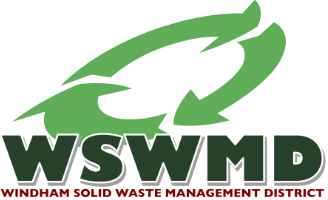Have you ever wondered what the numbers or recycling symbols mean at the bottom of plastic bottles and containers? The numbers represent the plastic resins used to make the item. Just because it has the chasing arrows, it doesn’t necessarily mean that it’s actually recyclable.
Here is a quick summary of the various recycling symbols and numbers:
The Recycling Symbols
Plastic #1 – PETE or PET (Polyethylene Terephthalate)
- Picked up by most curbside recycling programs, plastic #1 is usually clear or translucent and used for bottles and food “clamshells.” PET is a high-volume and high-value recyclable.
- It’s found mostly in soda bottles, water bottles, beer bottles, salad dressing containers, mouthwash bottles, and peanut butter tubs.
- Plastic #1 is recycled into tote bags, furniture, carpet, paneling, fiber, and polar fleece.
Plastic #2 – HDPE (High-Density Polyethylene)
- Plastic #2 is picked up by most curbside recycling programs and is a high-value recyclable.
- It’s found mostly in milk jugs, laundry detergent bottles, juice bottles, shampoo bottles, and motor oil bottles.
- Plastic #2 is recycled into pens, recycling containers, picnic tables, lumber, benches, fencing, detergent bottles, and more.
- “Natural” HDPE found in milk jugs has a very high value. Colored HDPE is separated by recycling plants, and while less valuable is still an economical recyclable material.
Plastic #3 – V (vinyl) or PVC (polyvinyl chloride)
- Plastic #3 is used to make food wrap, plumbing pipes, and sometimes for bottles, and is seldom accepted by curbside recycling programs. It is a low-value and low-volume recyclable.
- It’s found in shampoo bottles, clear food packaging, cooking oil bottles, medical equipment, piping, and windows.
- This plastic is recycled into paneling, flooring, speed bumps, decks, and roadway gutters.
Plastic #4 – LDPE (Low-Density Polyethylene)
- Low-density polyethylene is found in squeezable bottles, shopping bags, clothing, carpet, frozen food, bread bags, and some food wraps. It is a low-value and low-volume recyclable.
- Curbside recycling programs seldom accept this plastic.
- This plastic is recycled into compost bins, paneling, trash can liners and cans, floor tiles, and shipping envelopes.
Plastic #5 – PP (Polypropylene)
- Plastic #5 is found in yogurt tubs, butter tubs, and other food packaging.
- It’s increasingly becoming accepted by curbside recycling programs. Recycling plants in Vermont are increasing their capacity to handle PP because it is a growing and valuable recyclable.
- Polypropylene is recycled into brooms, auto battery cases, bins, pallets, signal lights, ice scrapers, and bicycle racks.
Plastic #6 – PS (Polystyrene)
- Polystyrene is most often used in Styrofoam, which is notorious for being difficult to recycle.
- Most recycling programs won’t accept it.
- Plastic #6 is also found in compact disc cases, egg cartons, meat trays, and disposable plates and cups.
- It is recycled into egg cartons, vents, foam packing, and insulation.
- WSWMD Does NOT accept Styrofoam for recycling, please put it into your household trash or use it for a DIY project.
Plastic #7 – Other, Miscellaneous
- All of the plastic resins that don’t fit into the other categories, or are a mix of resins, are placed in the number #7 category. It is a low-value recyclable and often not accepted in curbside programs.
- Plant-based plastics (PLA) are also #7 and are not recyclable, but may be compostable in industrial settings.
- Plastic #7 is found in hot-filled bottles, sunglasses, computer cases, nylon, 3 and 5-gallon water bottles, and bullet-proof materials.
- It is recycled into plastic lumber and other custom-made products.
